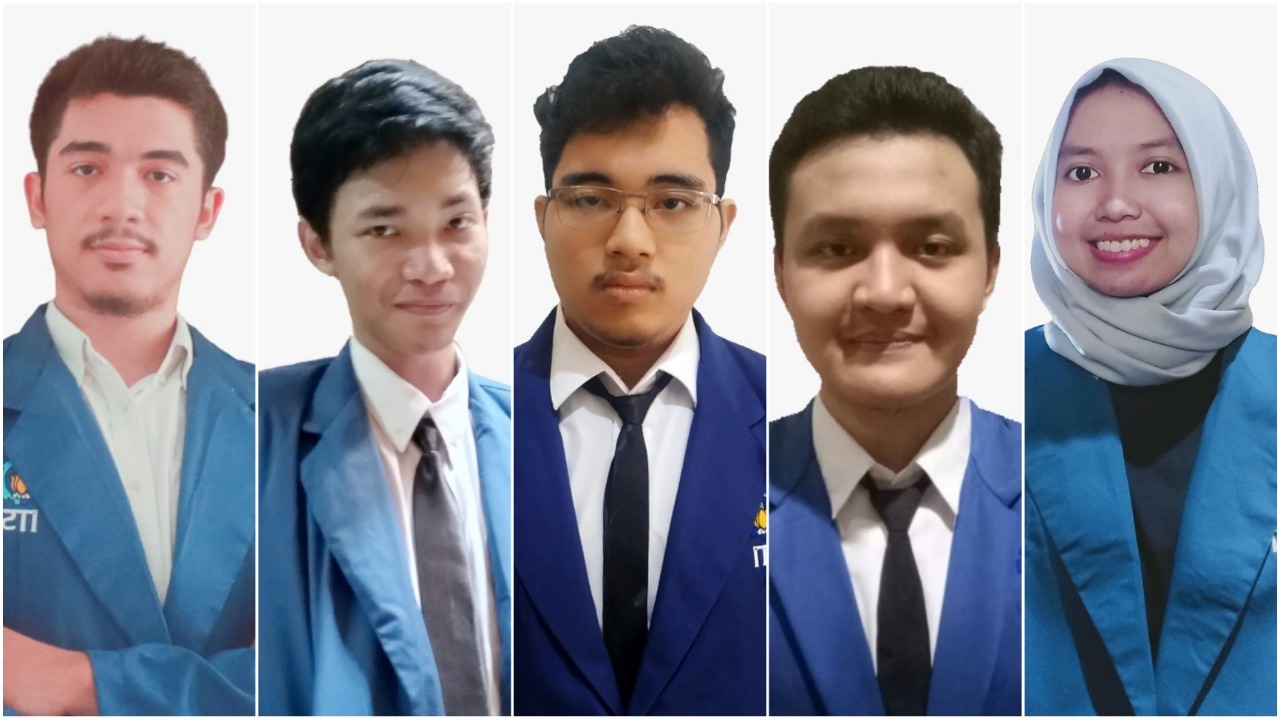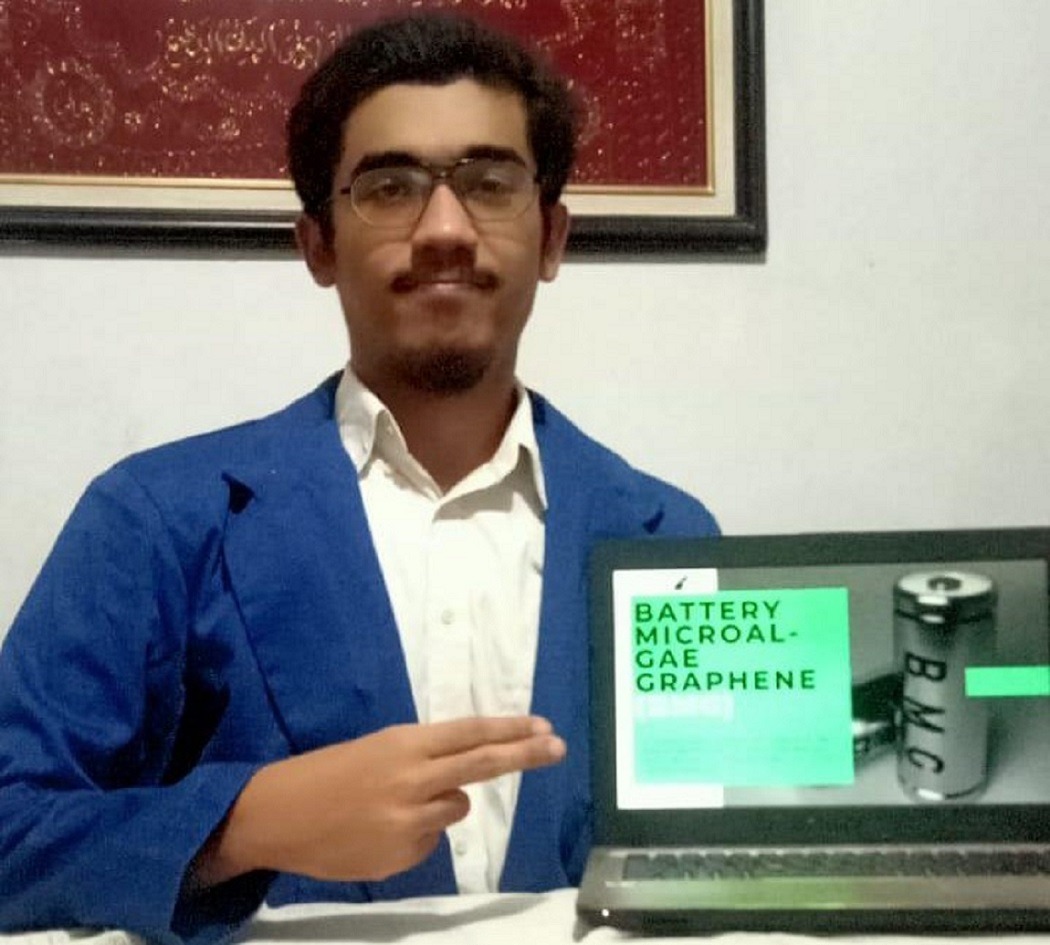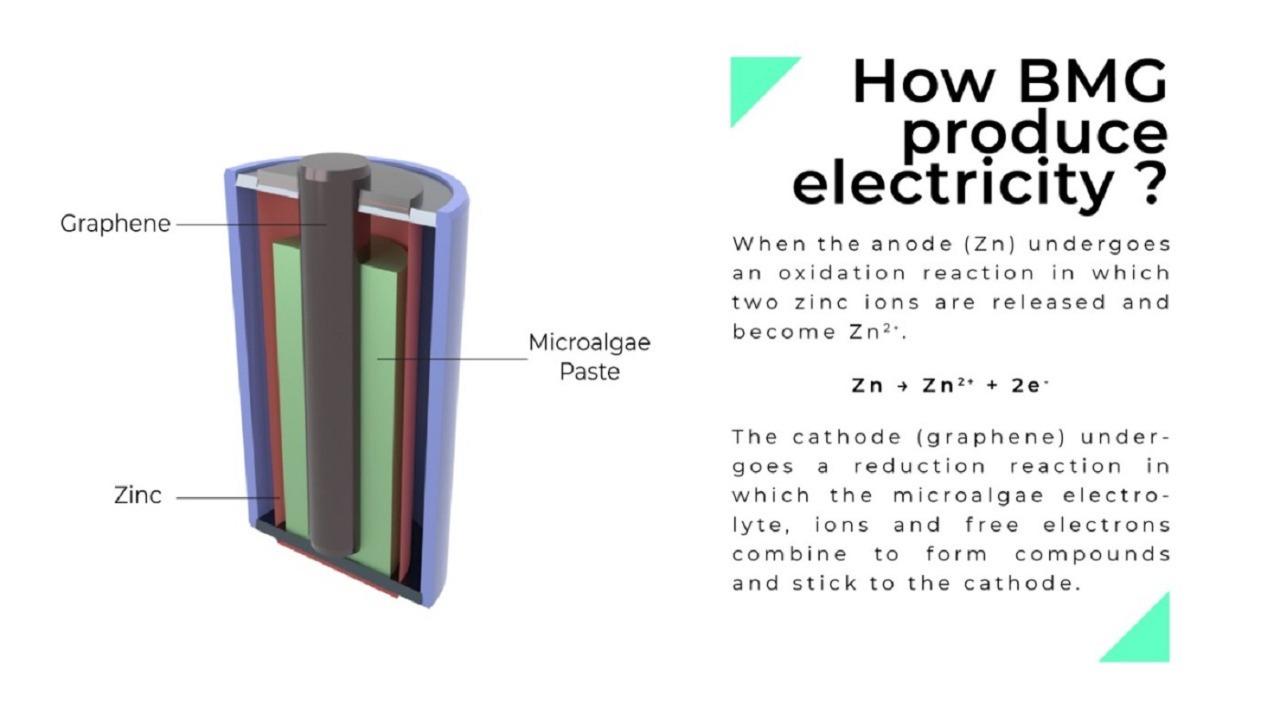Reduce B3 Waste, ITS Students Initiate Environmentally Friendly Batteries

(from left) Ersyad Dhillullah, Eigiant Andarta Atmadja, Gustiana Merdikaningrum, Muhammad Rafli Revansyah, and Mochammad Arsy Algifany Fudam from the ITS student team who initiated environmentally friendly batteries to reduce B3 waste
ITS Campus, ITS News – Playing an essential role in energy storage, batteries have extensive use in everyday life, and however, the battery waste is harmful to the environment and health. To replace dry batteries in general, five students of Institut Teknologi Sepuluh Nopember (ITS) initiated an environmentally friendly battery based on microalgae and graphene.
Ersyad Dhillullah, the team leader, said dry cell batteries often found in the market have zinc-carbon (zinc-carbon) base materials. The zinc-carbon battery is the oldest and most widely used battery. “If it can no longer be used, the battery will become a waste of Toxic and Hazardous Materials or B3,” he said.
Furthermore, Ersyad explained that even though it is classified as B3 waste, these used batteries are usually only disposed of in public landfills without any further waste classification or even a recycling process. “Surely this can harm the environment and human health,” he said.

Ersyad Dhillullah shows his team’s innovation in initiating environmentally friendly batteries.
Departing from this, Ersyad and the team initiated Battery Microalgae Graphene (BMG) as an environmentally friendly alternative to replace zinc-carbon batteries. BMG uses a combination of microalgae (Chlorella Sp.) as the electrolyte and graphene as the cathode. “By using environmentally friendly electrolytes, BMG can reduce the amount of hazardous chemical waste,” said Ersyad.
BMG generates electricity when the anode undergoes an oxidation reaction, and the graphene cathode undergoes a reduction reaction. According to Ersyad, graphene is used because it can effectively improve the transport of electrons and ions. Thus, the use of graphene can improve the electrical properties of batteries, providing better chemical stability and higher electrical conductivity and energy capacity.
Ersyad and his team believe that the innovation they have initiated is not expensive. Although they have to spend more initially, the application of their technology can provide more substantial and longer-lasting durability, so it is more economical. “From the performance testing results, BMG shows that it is 26.67 percent stronger and can last 40 percent longer than other existing zinc-carbon batteries,” explained the student from the Chemical Engineering Department.
With Ersyad, this team consists of three other Chemical Engineering Department students, namely Eigiant Andarta Atmadja, Gustiana Merdikaningrum, Muhammad Rafli Revansyah, and students from the Visual Communication Design Department (DKV) Mochammad Arsy Algifany Fudam. In the future, the team hopes that BMG can be immediately applied in daily life to support the development of green technology.

Illustration of an environmentally friendly Battery Microalgae Graphene (BMG), the idea of the ITS student team
Through their innovation with the title Battery Microalgae Graphene (BMG) – A Combination Paste of Chlorella Sp. and Graphene for an Eco-Friendly Battery: Durability Improvement of Zinc-Carbon Battery, Ersyad and his team won an gold medal in the ASEAN Innovative Science Environmental and Entrepreneur Fair (AISEF) 2022 in the Innovation Science category, some time ago. (ITS Public Relation/far)
Reporter: Tyara Novia Andhin
Related News
-
Improve Competence, ITS Alumni Launch AkademiSipil Learning Platform
ITS Campus, ITS News — With the increasing demands for competency in job competition, an alumnus of Instiut Teknologi
April 26, 2022 12:04 -
Continuously Making Achievements, ITS Lecturer Enters Top 100 Asian Scientists 2024
ITS Campus, ITS News — An extraordinary achievement was again made by Institut Teknologi Sepuluh Nopember (ITS) academician Sri
April 26, 2022 12:04 -
Facing Demographic Bonus, Professor Summit 2024 Improves the Quality of Superior Human Resources
ITS Campus, ITS News — The Professors Council of Institut Teknologi Sepuluh Nopember (ITS) held its 6th Professor Summit
April 26, 2022 12:04 -
Building Collaboration, Presenting Czech-Indonesia Friendship Exhibition at ITS
ITS Campus, ITS News — Institut Teknologi Sepuluh Nopember (ITS) was honored to host the Czech-Indo Friendship Exhibition 2024 to
April 26, 2022 12:04
